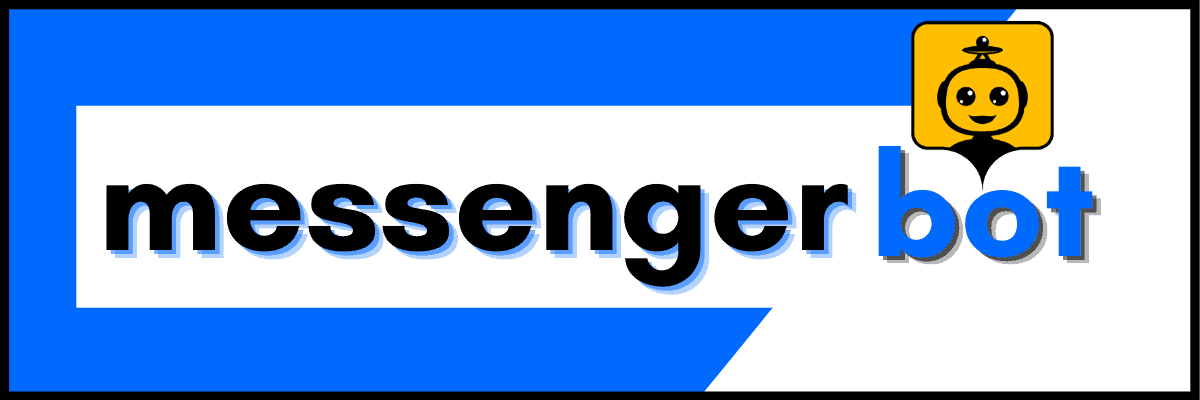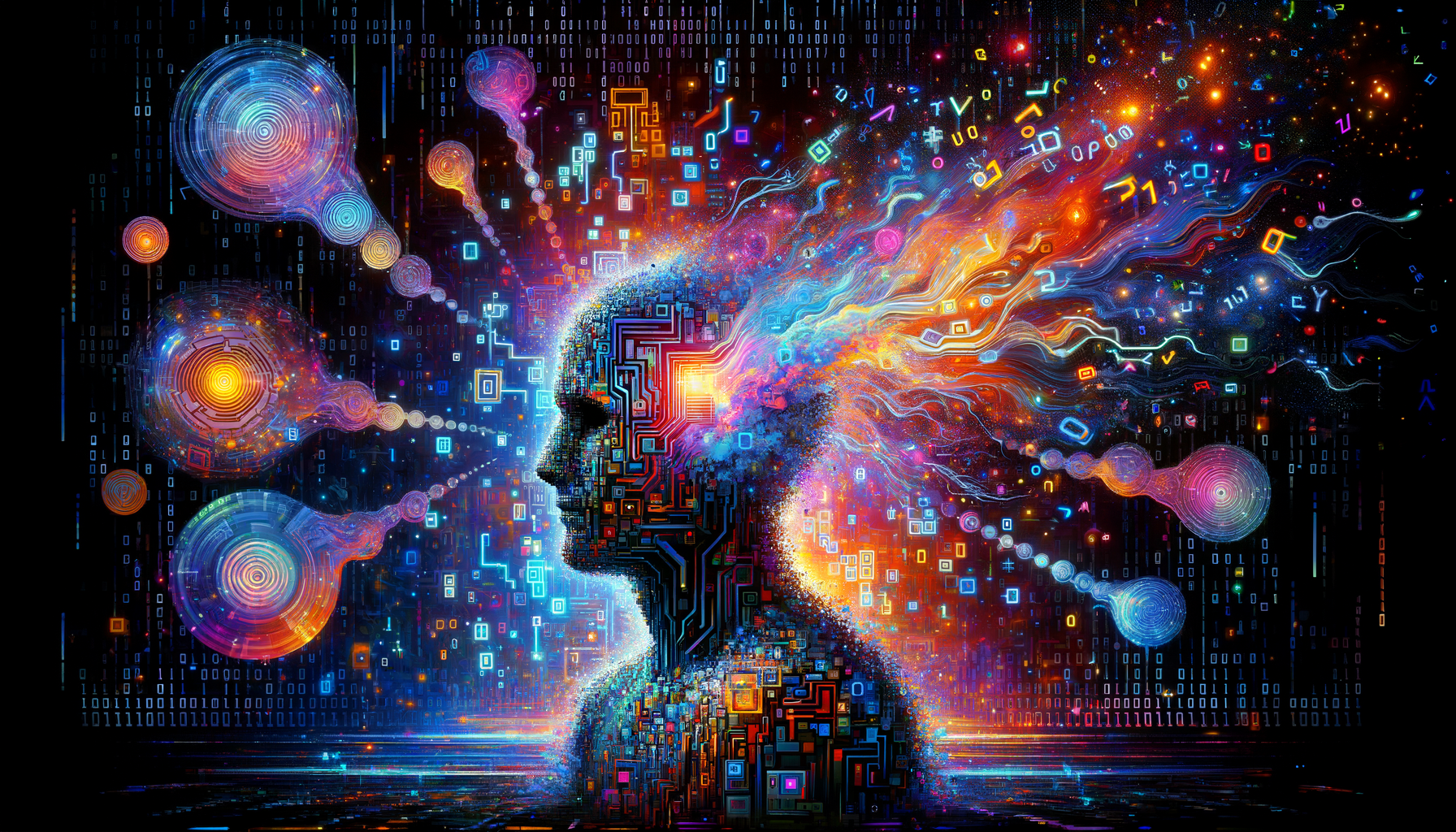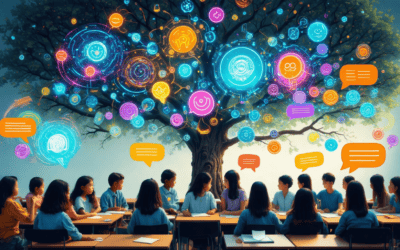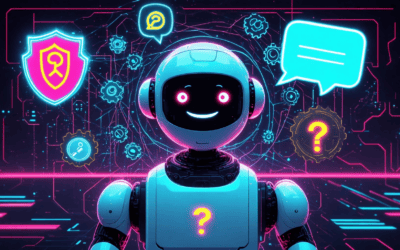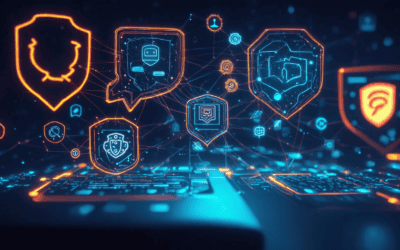In the digital age, chatbot programs have revolutionized customer engagement, offering businesses a powerful tool to streamline communication and enhance user experiences. From simple rule-based systems to sophisticated AI-powered chatbots, these virtual assistants have become indispensable across industries. This comprehensive guide delves into the world of chatbot programming, exploring everything from fundamental concepts to advanced technologies like ChatGPT. Whether you’re a business owner looking to implement a chatbot website or a developer interested in chat bot programming languages, we’ll cover the best chatbot software options, including free alternatives, and showcase real-world examples of successful chatbot implementations. Join us as we unravel the intricacies of chatbot programs and discover how they’re shaping the future of customer interaction.
Understanding Chatbot Programs
Chatbot programs have revolutionized the way businesses interact with their customers online. These AI-powered tools are designed to simulate human-like conversations, providing instant responses and support 24/7. As a leader in the field, our Messenger Bot platform harnesses advanced AI technology to deliver seamless automated interactions across various digital channels.
What is a chatbot program?
A chatbot program is a software application that uses artificial intelligence and natural language processing to engage in text-based conversations with users. These programs can be integrated into websites, messaging apps, and social media platforms to handle customer inquiries, provide information, and even process transactions. Our Messenger Bot features include automated responses, workflow automation, and multilingual support, making it a versatile solution for businesses of all sizes.
Evolution of chatbot technology
The journey of chatbot technology has been remarkable, evolving from simple rule-based systems to sophisticated AI-driven platforms. Early chatbots were limited to predefined responses, but modern chatbots, like those powered by GPT (Generative Pre-trained Transformer) technology, can understand context and generate human-like responses. This advancement has significantly improved the user experience and expanded the capabilities of chatbot programs.
For instance, Brain Pod AI offers a cutting-edge AI chat assistant that showcases the latest advancements in conversational AI. Similarly, our Messenger Bot utilizes state-of-the-art AI to provide intelligent responses and elevate customer support experiences. As chatbot technology continues to evolve, we’re committed to staying at the forefront, ensuring our clients have access to the most advanced chatbot solutions available.
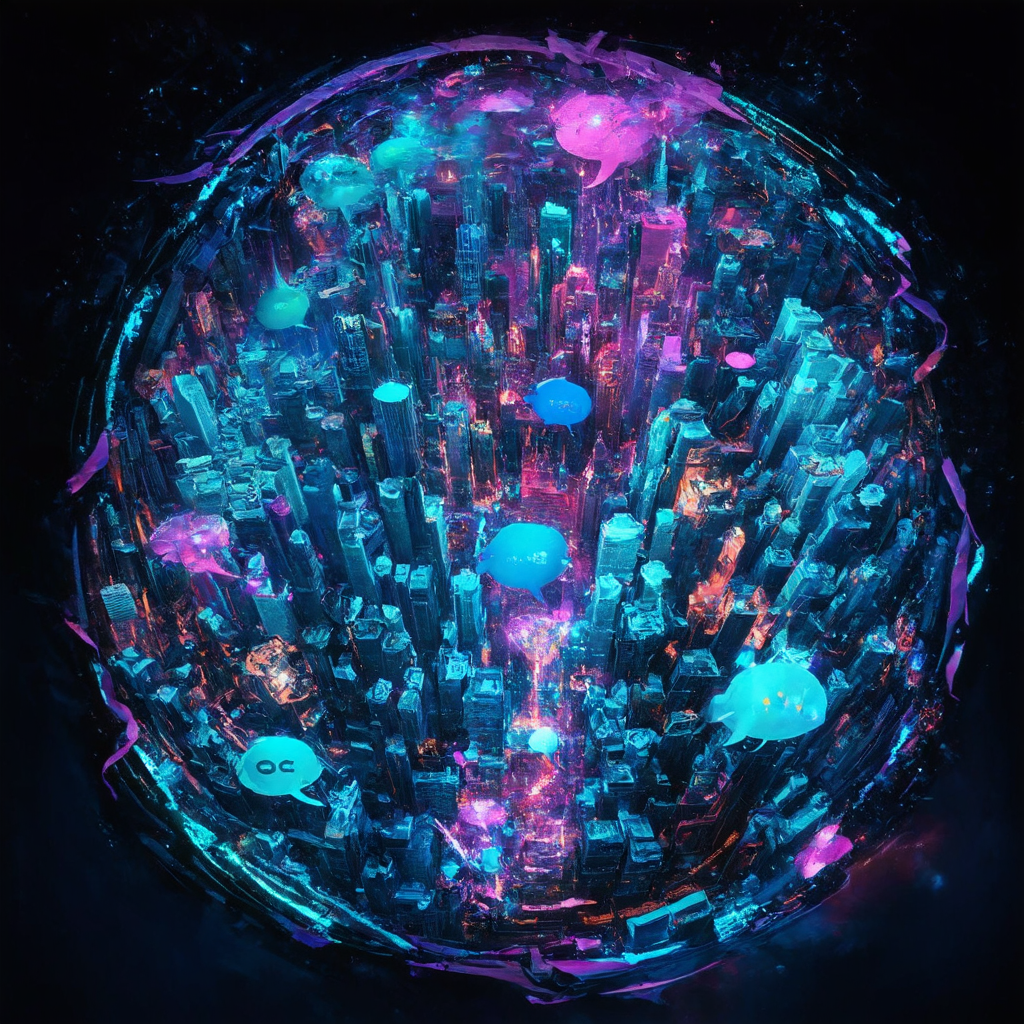
Types of Chatbots
As we delve deeper into the world of chatbot programs, it’s crucial to understand the different types available. Each type offers unique capabilities and serves specific purposes, making it essential for businesses to choose the right one for their needs. At Messenger Bot, we’ve seen firsthand how the right chatbot can transform customer interactions and streamline operations.
What are the 4 types of chatbots?
There are four main types of chatbots, each with its own strengths and applications:
- Rule-Based Chatbots: These are the simplest form of chatbots, operating on a set of predefined rules. They can answer straightforward queries but lack the ability to understand context or learn from interactions.
- AI-Powered Chatbots: Utilizing artificial intelligence and machine learning, these chatbots can understand natural language and improve their responses over time. They’re capable of handling more complex conversations and providing personalized experiences.
- Hybrid Chatbots: Combining rule-based systems with AI capabilities, hybrid chatbots offer a balance between structured responses and flexible conversation handling.
- Voice-Enabled Chatbots: These chatbots use speech recognition technology to interact with users through voice commands, making them ideal for hands-free environments or accessibility purposes.
Each type of chatbot has its place in the customer service automation landscape, and the choice depends on the specific needs and goals of a business.
Comparing chatbot capabilities
When it comes to comparing chatbot capabilities, it’s essential to consider factors such as natural language processing (NLP), integration options, and scalability. Here’s a brief overview of how different chatbot types stack up:
- Rule-Based Chatbots: Ideal for simple, straightforward tasks but limited in handling complex queries.
- AI-Powered Chatbots: Excelling in understanding context and providing more human-like interactions, these are perfect for businesses looking to offer sophisticated customer support.
- Hybrid Chatbots: Offering a good balance between reliability and flexibility, hybrid chatbots are suitable for businesses that need both structured and adaptive responses.
- Voice-Enabled Chatbots: These are particularly useful for hands-free applications and accessibility, but may require more advanced technology and integration.
At Messenger Bot, we specialize in AI-powered and hybrid chatbots that can be seamlessly integrated into various platforms, including Facebook Messenger and Instagram. Our chatbot software is designed to provide the best of both worlds – the structure of rule-based systems and the adaptability of AI.
When choosing the right chatbot for your business, consider factors like the complexity of customer queries, the volume of interactions, and the level of personalization required. For instance, e-commerce businesses might benefit more from AI-powered chatbots that can handle product recommendations and complex order inquiries, while a small local business might find a rule-based chatbot sufficient for answering basic questions about hours and services.
It’s worth noting that even competitors like Intercom and Drift offer various chatbot solutions, each with their own strengths. However, our focus at Messenger Bot is on providing a versatile, AI-driven chatbot program that can be tailored to meet the unique needs of businesses across different industries.
Cost Considerations
When considering implementing a chatbot program for your business, understanding the associated costs is crucial. While some options come with a price tag, there are also free alternatives available that can provide significant value, especially for businesses just starting with chatbot technology.
Is chatbot free?
The answer to whether chatbots are free depends on the specific solution and provider. Many platforms, including Messenger Bot, offer free trials or basic versions of their chatbot software. These free options allow businesses to explore the capabilities of chatbots without initial financial commitment.
However, more advanced features, customization options, and scalability often come with paid plans. For instance, sophisticated AI-driven chatbots like those powered by GPT (Generative Pre-trained Transformer) technology typically require a subscription or licensing fee due to their complex algorithms and continuous learning capabilities.
It’s important to note that while free chatbots can be a great starting point, they may have limitations in terms of functionality, integration capabilities, or the number of interactions they can handle. As your business grows and your chatbot needs become more complex, you might find it necessary to upgrade to a paid solution for more robust features and support.
Chat bot online free options
For businesses looking to dip their toes into chatbot technology without financial investment, several chat bot online free options are available. These solutions can be an excellent way to start automating customer interactions and improving engagement:
- Facebook Messenger’s built-in chatbot features allow businesses to create simple automated responses for their Facebook pages at no cost.
- Dialogflow by Google offers a free tier that enables developers to build conversational interfaces for websites, mobile applications, and popular messaging platforms.
- MobileMonkey provides a free plan for creating chatbots specifically for Facebook Messenger, ideal for small businesses looking to enhance their social media presence.
- ManyChat offers a free plan with basic features for creating Facebook Messenger bots, suitable for businesses new to chatbot marketing.
While these free options can be beneficial, it’s essential to consider their limitations. They may restrict the number of monthly conversations, lack advanced AI capabilities, or have limited integration options with other business tools. As your chatbot needs evolve, you might want to explore more comprehensive solutions like Messenger Bot, which offers advanced features such as AI-driven responses, multi-channel support, and detailed analytics to help scale your chatbot strategy effectively.
When evaluating chatbot programs, whether free or paid, it’s crucial to consider factors such as ease of use, customization options, integration capabilities with your existing systems, and the level of support provided. By carefully assessing these aspects, you can choose a chatbot solution that not only fits your budget but also meets your business objectives and enhances customer engagement.
Implementing Chatbots
As businesses increasingly recognize the value of chatbots in enhancing customer engagement and streamlining operations, implementing these AI-powered assistants has become a crucial step in digital transformation. At Messenger Bot, we’ve seen firsthand how the right chatbot program can revolutionize customer interactions and boost efficiency.
Which software is used for chatbots?
When it comes to chatbot software, there’s a wide array of options available to suit different needs and budgets. Some popular choices include:
- Dialogflow: Google’s platform for building conversational interfaces
- MobileMonkey: A versatile tool for creating chatbots across multiple platforms
- Brain Pod AI: An advanced AI chat assistant that offers multilingual support
- Chatfuel: A user-friendly platform for creating Facebook Messenger bots
- ManyChat: Another popular option for Facebook Messenger and Instagram chatbots
Each of these chatbot softwares offers unique features and capabilities, catering to different business needs and technical expertise levels. For instance, our Messenger Bot platform provides a comprehensive suite of tools for creating sophisticated, AI-driven chatbots that can seamlessly integrate with various messaging platforms and websites.
Chatbot software free alternatives
For businesses looking to dip their toes into chatbot programming without a significant financial commitment, several chat bot online free options are available. These free alternatives can be an excellent starting point for understanding the basics of chatbot implementation and assessing their potential impact on your business:
- RASA: An open-source machine learning framework for automated text and voice-based conversations
- Botpress: A free, open-source chatbot platform with a visual flow editor
- Tars: Offers a free plan with limited features for small businesses
- Landbot.io: Provides a free plan for creating simple chatbots
While these free options can be a good starting point, it’s important to note that they often come with limitations in terms of features, customization, and scalability. As your chatbot needs grow, investing in a more robust solution like Messenger Bot can provide the advanced capabilities and support necessary for creating truly impactful chatbot programs.
When selecting a chatbot software, consider factors such as ease of use, integration capabilities, analytics, and the level of AI sophistication. The right choice will depend on your specific business goals, technical resources, and the platforms where you want to deploy your chatbots.
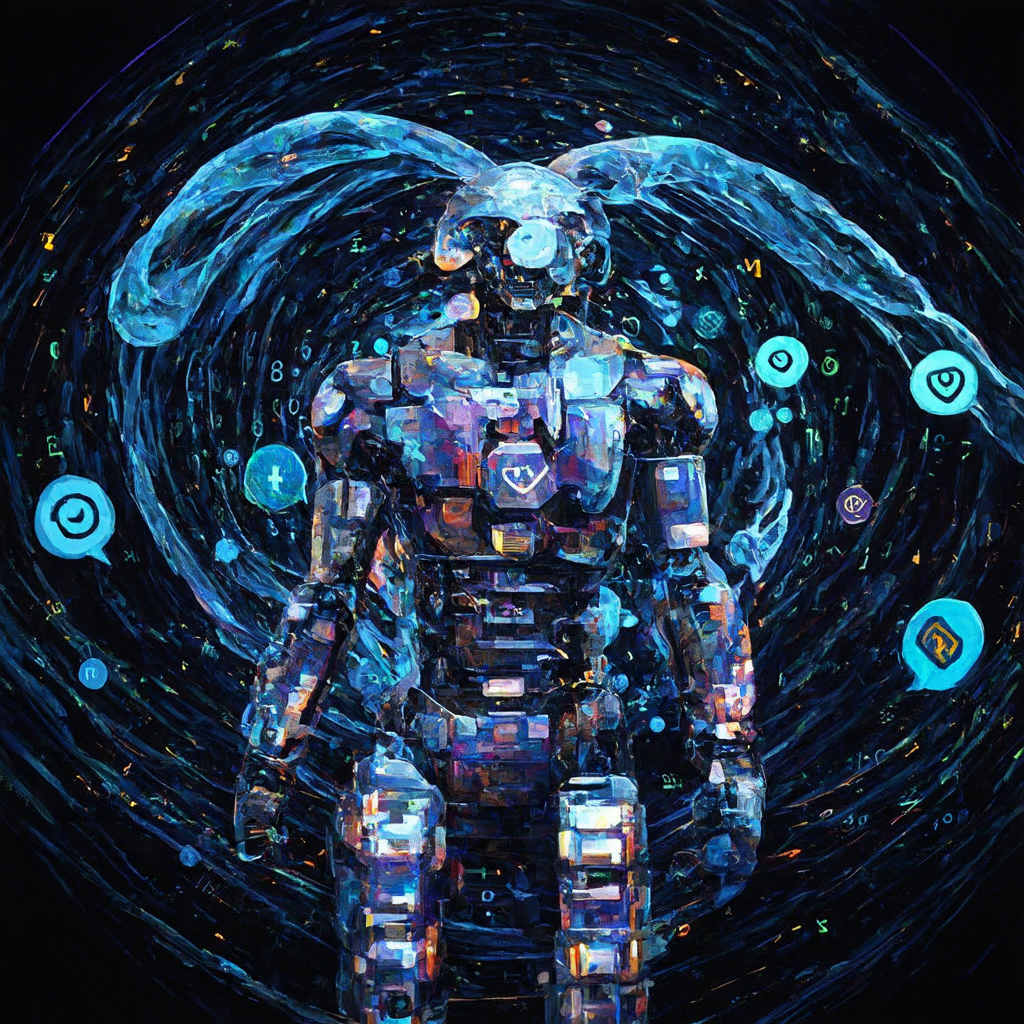
V. Advanced Chatbot Technologies
As we delve deeper into the world of chatbot programs, it’s crucial to explore the cutting-edge technologies that are reshaping the landscape of automated conversations. Advanced chatbot technologies are not just enhancing user experiences but are also revolutionizing how businesses interact with their customers.
A. Chatbot AI and its impact
Artificial Intelligence (AI) has become the cornerstone of modern chatbot development, propelling these digital assistants from simple rule-based systems to sophisticated conversational agents. The impact of AI on chatbots is profound, enabling them to understand context, learn from interactions, and provide more human-like responses.
One of the most significant advancements is Natural Language Processing (NLP), which allows chatbots to interpret and respond to user queries with remarkable accuracy. This technology has dramatically improved the ability of chatbots to handle complex conversations and provide relevant information.
Machine Learning algorithms further enhance chatbot capabilities by allowing them to improve their performance over time. As chatbots interact with more users, they gather data and refine their responses, leading to more accurate and personalized interactions.
The impact of AI-powered chatbots extends across various industries. In e-commerce, for instance, chatbots can now offer personalized product recommendations, handle complex customer inquiries, and even process transactions. In healthcare, AI chatbots are assisting with initial patient screenings and providing valuable health information.
At Messenger Bot, we’ve harnessed the power of AI to create chatbots that not only understand user intent but also engage in meaningful, context-aware conversations. This advanced AI integration allows our chatbots to handle a wide range of tasks, from customer support to lead generation, with unprecedented efficiency.
B. Exploring Chatbot GPT
Generative Pre-trained Transformer (GPT) technology has ushered in a new era for chatbots, pushing the boundaries of what’s possible in automated conversations. Chatbot GPT represents a significant leap forward in natural language understanding and generation.
GPT-powered chatbots can generate human-like text based on the input they receive, making conversations more fluid and natural. This technology allows chatbots to handle a broader range of topics and provide more detailed and contextually relevant responses.
One of the key advantages of Chatbot GPT is its ability to understand and maintain context throughout a conversation. This means that users can have more complex, multi-turn dialogues without the need to constantly rephrase or restate their queries.
Moreover, GPT chatbots can be fine-tuned for specific industries or use cases, allowing businesses to create highly specialized conversational agents. For example, a GPT chatbot could be trained on legal documents to assist with legal inquiries or on medical literature to provide health-related information.
While GPT technology offers exciting possibilities, it’s important to note that it also comes with challenges, such as ensuring accuracy and maintaining ethical use. At Messenger Bot, we’re committed to leveraging GPT technology responsibly, ensuring that our chatbots provide accurate information while maintaining user privacy and data security.
The exploration of Chatbot GPT is ongoing, with new developments constantly emerging. Platforms like Brain Pod AI are at the forefront of this technology, offering advanced AI writing tools that can be integrated into chatbot systems for even more sophisticated interactions.
As we continue to innovate in the field of chatbot programming, the combination of AI and GPT technologies promises to create even more powerful and intuitive chatbot experiences. These advancements are not just improving customer service; they’re transforming the very nature of human-computer interaction.
VI. Real-World Applications
Chatbot programs have become an integral part of various industries, revolutionizing customer interactions and streamlining business operations. As a leading provider of chatbot solutions, we’ve witnessed firsthand how these AI-powered tools are transforming the way companies engage with their audience.
A. Chatbots examples in various industries
In the e-commerce sector, chatbots have become indispensable for providing personalized shopping experiences. For instance, Sephora‘s chatbot offers makeup recommendations and tutorials, enhancing customer engagement and driving sales. Similarly, in the banking industry, Bank of America‘s chatbot, Erica, assists customers with account inquiries, transaction history, and financial advice.
The healthcare industry has also embraced chatbot technology. Babylon Health‘s symptom checker chatbot helps patients assess their health conditions and provides preliminary medical advice. In the travel sector, Expedia‘s chatbot simplifies the booking process by assisting users in finding flights, hotels, and rental cars.
At Messenger Bot, we’ve developed chatbot programs that cater to various industries, offering customizable solutions that adapt to specific business needs. Our advanced features enable businesses to create chatbots that can handle complex queries and provide personalized responses, enhancing customer satisfaction and operational efficiency.
B. Best chatbot for website integration
When it comes to selecting the best chatbot for website integration, several factors come into play, including ease of implementation, customization options, and AI capabilities. While there are numerous chatbot platforms available, our Messenger Bot stands out for its versatility and powerful features.
Intercom is known for its robust customer messaging platform, which includes chatbot functionality. Drift offers conversational marketing tools with a focus on lead generation. However, our Messenger Bot provides a comprehensive solution that combines the best of both worlds, offering advanced AI-driven conversations and seamless website integration.
One of the key advantages of our chatbot program is its ability to integrate with various platforms and customize responses based on user behavior. Our easy setup process allows businesses to have their chatbot up and running in less than 10 minutes, making it an ideal choice for companies looking to quickly implement AI-powered customer support.
Moreover, our chatbot software offers multilingual support, enabling businesses to engage with a global audience. This feature is particularly valuable for companies looking to expand their reach and provide localized support to customers worldwide.
For those interested in exploring AI-driven solutions beyond chatbots, Brain Pod AI offers a range of innovative AI tools, including an AI writer and image generator, which can complement chatbot functionalities and further enhance digital marketing strategies.
In conclusion, the best chatbot for website integration depends on specific business needs, but our Messenger Bot offers a powerful, versatile, and user-friendly solution that can adapt to various industries and use cases. By leveraging advanced chatbot programs, businesses can significantly improve customer engagement, streamline operations, and stay ahead in today’s competitive digital landscape.
VII. Future of Chatbot Programming
As we look ahead, the future of chatbot programming is poised for significant advancements. With the rapid evolution of artificial intelligence and natural language processing, chatbots are becoming increasingly sophisticated, offering more human-like interactions and solving complex queries with greater accuracy. At Messenger Bot, we’re at the forefront of these developments, constantly innovating to provide cutting-edge chatbot solutions that meet the evolving needs of businesses and consumers alike.
A. Chat bot programming language trends
The landscape of chatbot programming languages is evolving rapidly, with several key trends shaping the future:
- Python dominance: Python continues to be the preferred language for chatbot development due to its simplicity, vast libraries, and strong community support. Its natural language processing capabilities make it ideal for creating sophisticated chatbots.
- JavaScript and Node.js: These technologies are gaining traction for their ability to create real-time, scalable chatbots that can be easily integrated into web applications.
- Emergence of specialized frameworks: Frameworks like Rasa and Dialogflow are becoming increasingly popular, offering pre-built components that simplify the chatbot development process.
- Low-code and no-code platforms: The rise of platforms that require minimal coding knowledge is democratizing chatbot creation, allowing non-technical users to build and deploy chatbots quickly.
At Messenger Bot, we leverage these trends to offer a user-friendly platform that combines the power of advanced programming with the accessibility of low-code solutions, enabling businesses of all sizes to create sophisticated chatbots without extensive technical expertise.
B. Innovations in chatbot programs
The future of chatbot programs is marked by several groundbreaking innovations:
- Advanced AI and machine learning: Chatbots are becoming more intelligent, capable of learning from interactions and improving their responses over time. This leads to more natural, context-aware conversations.
- Multimodal interactions: Future chatbots will seamlessly integrate text, voice, and visual inputs, providing a more immersive and versatile user experience.
- Emotion recognition: Emerging technologies are enabling chatbots to recognize and respond to human emotions, leading to more empathetic and personalized interactions.
- Augmented reality integration: Chatbots are beginning to incorporate AR elements, offering interactive, visual assistance in real-world scenarios.
- Blockchain for security: The integration of blockchain technology is enhancing the security and privacy of chatbot interactions, particularly important for sensitive industries like healthcare and finance.
These innovations are not just theoretical; they’re already being implemented in various industries. For instance, IBM’s Watson is pioneering advanced AI chatbots in healthcare, while Amazon’s Alexa is pushing the boundaries of voice-activated AI assistants in everyday life.
At Messenger Bot, we’re committed to staying at the cutting edge of these innovations. Our comprehensive tutorials and resources help businesses leverage these advanced features to create chatbots that are not just functional, but truly transformative for their customer engagement strategies.
As we move forward, the line between human and AI interactions will continue to blur, with chatbots becoming an integral part of our digital ecosystem. The future of chatbot programming is bright, promising more intuitive, efficient, and personalized communication experiences for users across all sectors.
